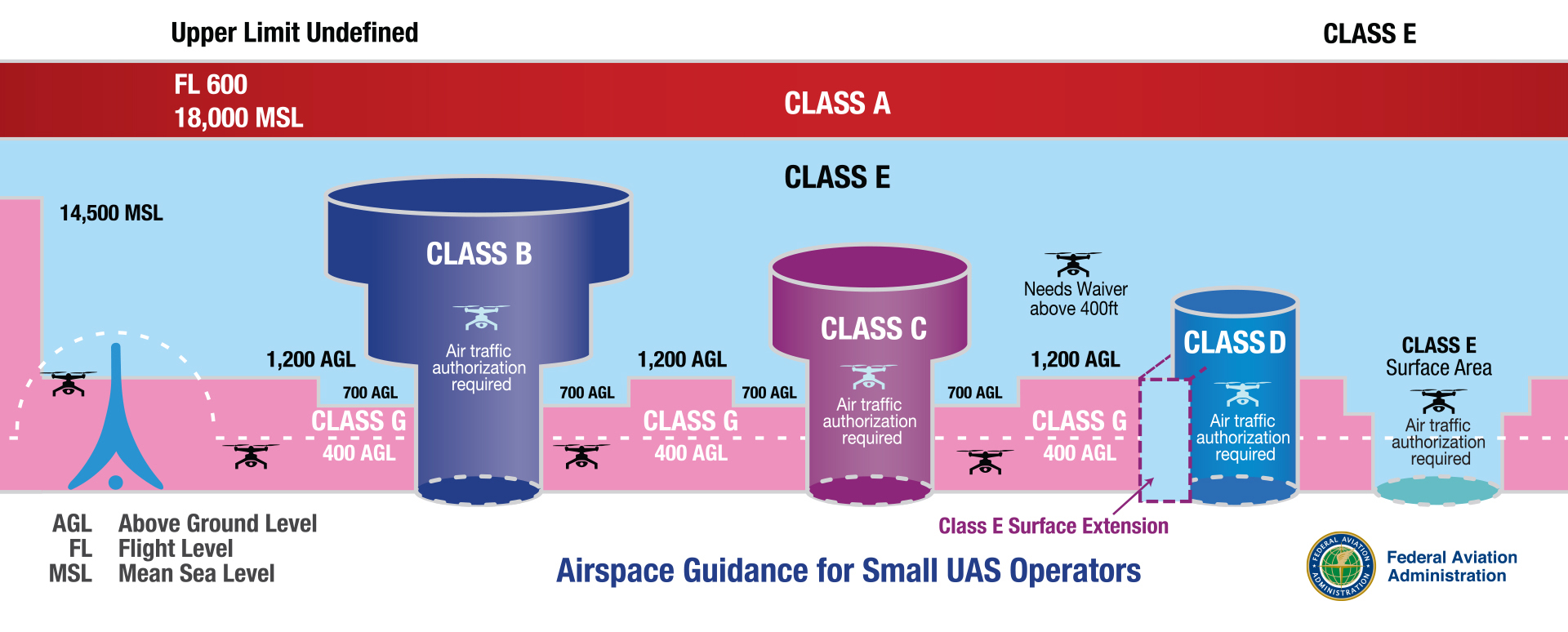How to Legally Operate a Drone under Federal Regulations
This guide explains everything you need to know to fly a drone legally in the United States under federal law. You will learn who may fly drones, how to register and identify your aircraft, where you can operate, and what safety measures you must observe. The Federal Aviation Administration (FAA) regulates all aspects of drone operation, from who can fly to where and how you can operate your aircraft.
Who Is Allowed to Fly Drones
The FAA has different rules for different types of drone operators. The main categories are recreational flyers, commercial pilots, and international visitors. Each group has specific requirements and restrictions to ensure safe and responsible drone use. The FAA has a tool that can help you identify what kind of flyer you are here.
Recreational pilots must follow the Exception for Recreational Flyers, which includes flying only for fun, staying below 400 feet, and maintaining visual line of sight. You also must fly within the United States and follow community-based safety guidelines. The FAA provides a list of approved organizations that set these guidelines. Read more in our Recreational Drone Regulations article or on the FAA's website.
Commercial operators need a Part 107 remote pilot certificate and must register their drones for commercial use. Read more in our Commercial Drone Regulations article or on the FAA's website.
International visitors must follow the FAA’s guidelines for foreign drone operators, which include registering the drone and following the FAA's Remote ID guidelines. You can find more information on the FAA’s website.
These regulations apply to drones within a certain weight range. Drones that weigh more that 55 pounds (25kg) are considered large unmanned aircraft systems (UAS) and have additional requirements. The FAA’s Large UAS registration page provides more information on these regulations.
How to Register Your Drone and Pass the TRUST Test
Every drone weighing more than 0.55 lbs (250 grams) must have a registration number before it can fly. You register on the FAA DroneZone portal, pay a $5 fee, and that registration lasts for three years. The name on your registration must match your government ID, and you must display the number on the outside of your drone so it is visible without taking the craft apart.
Recreational pilots also must pass the TRUST exam before their first flight. You can take the free online test through any approved administrator. You can find locations and online proctors on the FAA's website. FPV Fish has a study guide and practice questions.
For a detailed guide on registration and the TRUST test, see our Drone Registration Guide.
Commercial pilots must register their drones under Part 107 and pass the FAA’s Remote Pilot Knowledge Test. This test covers airspace rules, weather, emergency procedures, and more. You can find study materials and testing locations on the FAA's website.
Airspace Rules and Local Restrictions
The FAA classifies airspace from Class A through Class G. You may not enter Classes A, B, C, D, or E surface areas without authorization via the Low Altitude Authorization and Notification Capability (LAANC) portal. You may fly in Class G and Class E above 700 feet without permission, provided you stay under 400 feet above ground level and maintain line of sight. You must stop flying if you lose visual contact or visibility drops below three statute miles.

Airspace illustration courtesy of the Federal Aviation Administration.
Keep in mind that cities and counties can prohibit takeoff or landing on certain properties even if they cannot change FAA airspace rules. Our local drone laws database helps pilots instantly identify these local rules.
Remote Identification Requirements
Since March 16, 2024, every drone in flight must broadcast a digital license plate that shows its ID, latitude, longitude, altitude, and ground speed. If your model lacks built-in broadcast capability, you must attach an approved remote ID module. Review the FAA’s Remote ID rules.
FPV Fish has a Remote ID Guide that explains how to comply with these requirements, including how to find compatible modules and what to do if your drone does not support Remote ID. We are also developing our own Remote ID module that will work with many popular drones, which will be available soon.
Waivers and Special Authorizations
If you need to fly outside standard limits—such as beyond visual line of sight, at night, or above 400 feet—you must apply for a waiver. Your application must include a safety case and risk-mitigation plan. Waivers can take weeks or months to process, so submit well before your planned flight. To learn more and apply visit this page. For tips on preparing your waiver request, see our FAA Waivers Guide.
Enforcement and Penalties
FAA inspectors and law enforcement have the authority to inspect your drone and credentials at any time. Violations can lead to civil fines up to $27,500 per offense or even criminal charges for reckless or harmful operations. The FAA publishes enforcement case summaries that highlight common mistakes and help pilots learn from past incidents. You can find these summaries on the FAA’s Enforcement Reports page.
Tips for Staying Compliant
Before every flight, check real-time airspace data using the B4UFLY app. Consult the FAA’s Notice to Air Missions (NOTAM) system for temporary flight restrictions. Maintain a flight log recording date, location, and any safety issues. Keeping accurate records can protect you in case of an inspection.
Staying Up to Date with Rule Changes
Federal drone regulations change through FAA rulemaking and public comment periods. Subscribe to email updates on the FAA’s UAS page and watch for Notices of Proposed Rulemaking. Agencies like the National Telecommunications and Information Administration also affect drone operations by allocating radio spectrum for control links and video transmission.
Following these federal rules will help you fly safely, legally, and with confidence.